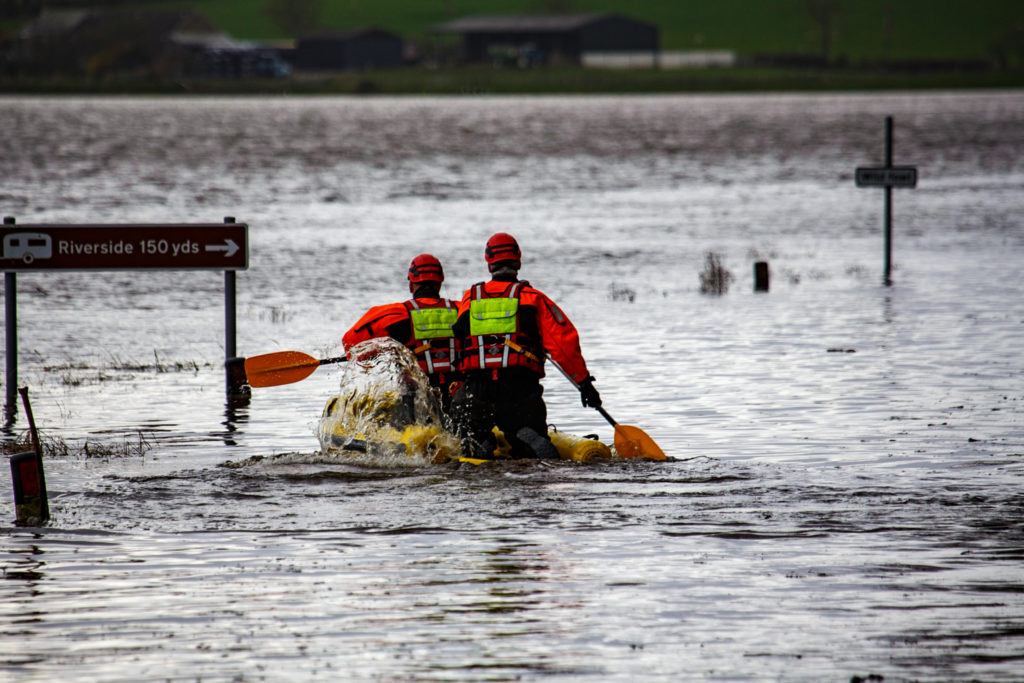Rain After a Drought can be Dangerous… Watch Out!
Since droughts and wildfires plague the western half of our country, flooding seems to be the least of our worries. A large, interstate rainstorm sounds like the perfect remedy for our domestic and wild ecosystems. However, if we are unprepared, a storm could lead to flooding, which can then lead to greater ecological harm. Even though colossal rainfall would appear to be the perfect solution for our lakes, rivers, crops, soil, and wildlife, it’s also important to be cautious of the dangers that result from flooding.
How do we Prepare for Flooding?

“Damaging flooding may happen with only a few inches of water, or it may cover a house to the rooftop.” (learn more here) Since flooding has a wide range of causes and sizes, the effects can be as minor as some puddles on a sidewalk to as major as the alteration of biosystems, submerging of streets, and elimination of domestic crops, making flooding as harmful to land as any natural disaster. In the event of a significant flood, please see the safety recommendations on Floods. The key is to make sure that we are prepared–on an individual and municipal level–for any kind of drastic increase in our water reception.
What are the Environmental Dangers of Flooding?
Because there are so many types of floods (see here), flooding’s negative effects come in a wide range of severity. A small-scale example is a heavy rainfall’s effects on dry, developing lots, which can wash oils, gases, trash, and other pollutants into stormwater drains. It is vital for these developers to ensure that their runoff is clear, which can be done by maintaining compliance with the EPA’s stormwater guidelines. If these inspections are not being completed properly, the site’s pollutants can be washed away into natural water bodies.
A large-scale example of flooding’s potential environmental harm is water overflow after a drought or significant fire. When plants wither away from a lack of water or burn down by forest fires, dirt and natural debris are unstabilized without healthy plant roots to secure them in the ground. The next time water floods this same land, all of the loose dirt and dead foliage can easily be washed down into rivers and lakes, harming the aquatic life within. The Center for Watershed Protection further details how vital plant life is to maintaining clean natural runoff.

A large-scale example of flooding’s potential environmental harm is water overflow after a drought or significant fire. When plants wither away from a lack of water or burn down by forest fires, dirt and natural debris are unstabilized without healthy plant roots to secure them in the ground. The next time water floods this same land, all of the loose dirt and dead foliage can easily be washed down into rivers and lakes, harming the aquatic life within. The Center for Watershed Protection further details how vital plant life is to maintaining clean natural runoff.\
Do You Want to Help?
First and foremost, we need to make sure that our individual properties are adequately prepared. Roof gutters, storm drains, and street rain gutters are designed to protect our properties against rainfall. So our job is to ensure that we do not have any harmful chemicals (fertilizers, pesticides, oils, soaps, etc.) lying loosely on our property. We also need to check that the gutters and drains are clear from any trash or dirt. It is valuable to have a personal stormwater checklist that we can go through whenever our properties emit any kind of water runoff so that we can mitigate our ecological impact.
The next step we can take is to coordinate with our local municipalities. This can be done by asking about the MS4’s flood and stormwater management plans. These plans are designed to keep our environment safe and to educate and involve the public. But municipalities are not the sole providers of stormwater education. We can educate ourselves from other sources like the EPA’s website and hundreds of other online resources. Then we can help inform those around us about flooding and stormwater pollution, to create a strong, environmentally conscious community within our own neighborhoods. We can also help educate the friends we have less face-to-face contact with by sharing stormwater ads, videos, and pictures on social media.
Whether you live in a city with a lot or a little rainfall, the best thing to do is to stay involved. If we keep our streets and properties clean, we will help mitigate environmental damage through innovative stormwater management solutions. These include:
- Green infrastructure
- Low Impact Development (LID)
- Clean up after yourself (salt, grass clippings, soaps, pet waste, etc.)
- And more!
How will YOU change the world?

By: Jacob Buchanan

